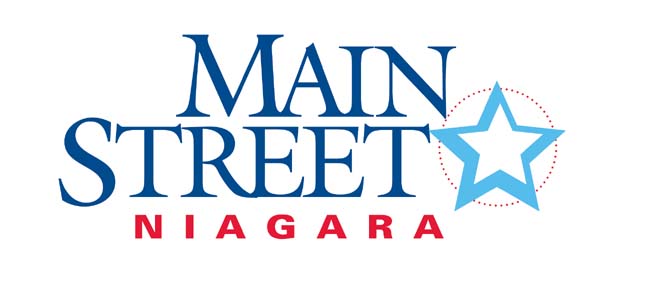The history and architecture of Main Street is a reflection of the great history of the City of Niagara Falls. Main Street connects the Falls with Lewiston and areas to the north. It parallels the Niagara Gorge.
In the mid-1800’s, starting at what is now Pine Avenue, Main Street was known as the “Road to Lewiston.” Today, north of Ontario Avenue and the railroad viaduct, it still bears the name, "Lewiston Road." In the mid to late 1800’s, lower Main began at Buffalo Avenue and was called Ontario Street. This area, now known as the “South End,” was first called Manchester and later became the City of Niagara Falls.
Traveling north, the Elmwood and Ashland Avenue area was originally part of a farm owned by Henry W. Clark and became known as Clarksville.
The first bridge built in 1848 by Charles Ellet, spanned the gorge at its narrowest part -the whirlpool rapids. Remains of the abutments of the original bridge can be seen from the existing bridge. The area around the bridge, including what is now Main Street, was first ” It was later named “Suspension Bridge Village.” It wasn't until 1898 when the “Honeymoon Bridge” or “Falls View Bridge” was constructed at the lower or south end of Main Street, that the city had a second bridge to Canada.
As the area along the gorge grew and began to expand east and to the north, so did Main Street. It became a center for commerce for the city's residents and people living in nearby towns and villages. Main Street prospered, as did our great city. The river was harnessed for power that in turn attracted a number of industries to the area. Many well-known companies such as Carborundum and Occidental Chemical Corporation (formerly Hooker Chemical) got its start in this area. Industry brought more people here and Niagara Falls grew. The war effort, and later the building of the Niagara Moses Power Plant helped to sustain the economy.
In the mid-1970’s industry began to look south of the US and many moved from Niagara Falls. Other companies severely cut their production and work force. The population of Niagara Falls and Niagara County decreased dramatically. People moved to the suburbs, shopping malls were built, and one-by-one Main Street businesses were forced to close their doors.
Today there is not only hope for Main Street; there is a plan that has been implemented since 1999. The Plan for the Revitalization of Main Street is a major part of a burgeoning comprehensive strategic plan being developed at press time. This plan promises to bring to our city a new and vibrant Main Street. Restaurants, coffee houses, boutiques, entertainment venues, professional offices and private residences can breathe life back into this once thriving business district.
Main Street and the surrounding area is an eclectic mixture of architecture. From the Neo-Classical Style of City Hall to the Armory’s Romanesque, to the Chicago-inspired style of the former Jenss Department Store, the buildings tell a story to all who will listen. These buildings, for the most part are structurally sound and available for just the right entrepreneur at an affordable price.
..
skip to main |
skip to sidebar


Mayor Dyster Congratulates Beeton's Cyclery for 100 years in business!

New York State Armory

Flag Day Ceremony


PROUD OF OUR PAST... DEDICATED TO OUR FUTURE
CNY
Chinese New Year 2011 was a great Success.. thanks to all of those who attended!
Check Out Our Site!
- About Us (1)
- Economic Development (1)
- History and Heritage (1)
- Membership (1)
- North Star (1)
Contact Us!
If you would like to contact the Main Street Business & Professional Association please use the information below.
Mail: MPO Box 442
Niagara Falls, NY 14302
Phone: 716.285.1318
Email: mainstreetniagara@yahoo.com
Mail: MPO Box 442
Niagara Falls, NY 14302
Phone: 716.285.1318
Email: mainstreetniagara@yahoo.com
SIGHTS AROUND MAIN STREET

Mayor Dyster Congratulates Beeton's Cyclery for 100 years in business!
Main Street Properties for Sale

New York State Armory
Flag Day Ceremony
Blog Archive
- May (6)
Links Across Niagara



